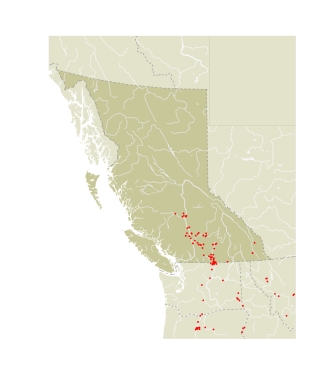AdultAdults of this species and its sister species, P. mylitta, differ from others in the genus. They show the primitive checkerboard upperside wing pattern of the subfamily. The Pale Crescent looks essentially like the Mylitta Crescent, but is about twice as large, with a crisper underside pattern.
Immature StagesUndescribed.
SubspeciesBC populations are currently differentiated as the Great Basin subspecies Barnes' Pale Crescent, P.p. barnesi Skinner, 1897 (TL: Glenwood Springs, CO), but are only weakly, if at all, different from the nominate subspecies (TL: Flagstaff Mt., Boulder Co., CO).
